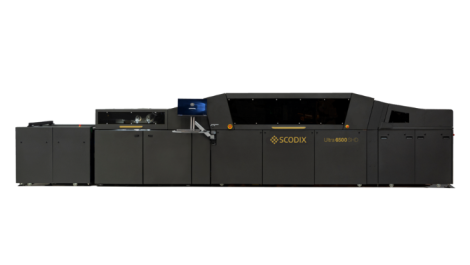Global Graphics Software (part of Hybrid Software Group since the 2021 acquisition) has been granted a US patent for technology that uses artificial intelligence-based techniques to optimise and accurately predict the processing times of PDF jobs being sent for output on digital presses.
Covering Methods and Systems for Enhancing Raster Image Processing Using Artificial Intelligence, the patented technology is already embedded in Global Graphics Software’s SmartDFE, a digital front end for high-speed industrial inkjet presses.
‘Real-time inline rasterisation of variable data for high-speed digital presses poses a significant challenge, as it requires a very high constant rate of raster data to be delivered to the press. Unfortunately, the diversity of PDF files and computing hardware ensures that very complex jobs may process too slowly for inline rasterisation. Compounding this issue is the vast number of PDF creators in the market, who prioritize design flexibility without considering rasterisation or printing,’ explained Eric Worrall, VP of Products and Services and the inventor of the patent.
‘Digital press operators have been forced to process jobs in advance – while their press sits idle – or to process jobs inline and hope that the DFE can provide data at the speed of the digital press. This risk has made the production use of inline Rips for high-speed inkjet presses impractical until now.’
With this invention, SmartDFE uses AI and machine learning to create an ‘intelligent Raster Image Processor (Rip) model’, tailored to each press manufacturer’s chosen computing hardware and encompassing a range of over 1000 PDF operations which take place in the Harlequin Rip in the SmartDFE. Once trained, this model can deconstruct any PDF print job and predict the minimum constant raster data rate and hence the printing speed that can be achieved, so press operators can make well-informed decisions and effectively plan their production processes. This data-driven approach allows SmartDFE to automatically fine-tune the Rip settings for each job, using Global Graphics’ 30 years of experience in developing the Harlequin Rip.
‘We applied for this patent two years ago, long before artificial intelligence became an everyday term. But this is a very practical application of AI that solves some long‑standing challenges in inkjet production printing. By applying this invention to the Harlequin Direct technology in SmartDFE, we have the first true production-quality solution for inline rasterisation on high-speed digital presses,” added Mr Worrall.
The technology would appear to be applicable across the entire gamut of digital print but is likely to gain the most traction in demanding high speed single-pass continuous-feed inkjet applications in transactional and direct marketing print, high productivity wide-format display, packaging, textiles and other industrial uses.





